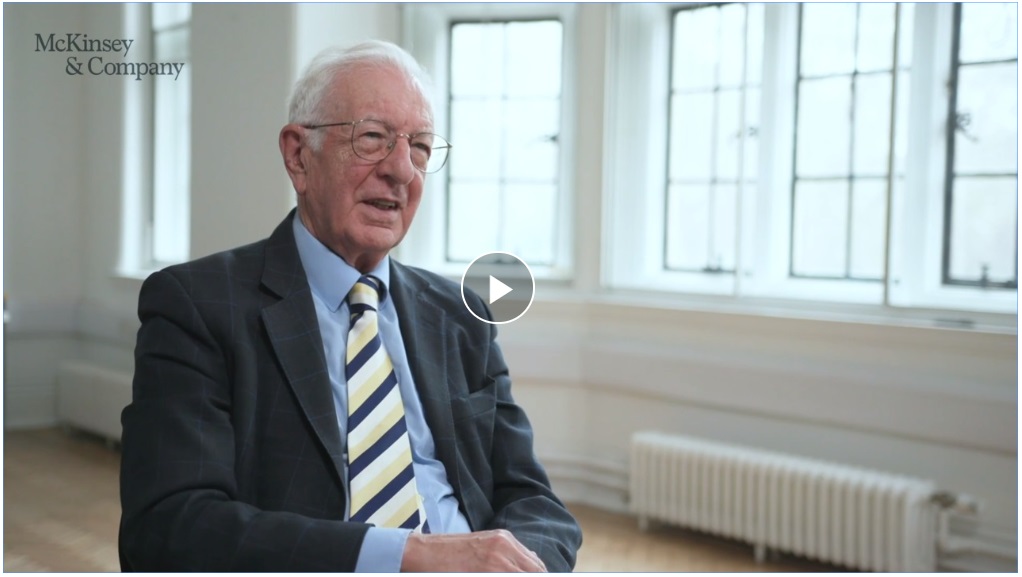
Happiness at Work – 2019 Insights and Research
So much is written about happiness at work — yet judging from Gallup statistics that show 85% of employees aren’t engaged, few know how to attain it.

Given that the average person spends 90,000 hours at work in a lifetime, it’s important to figure out how to feel better about the time you spend earning a living.
Here’s the catch, though:
If you set happiness as your primary goal, you can end up feeling the opposite.
This is because happiness (like all emotions) is a fleeting state, not a permanent one.
An alternative solution is to make meaning your vocational goal.
Research shows that making work more meaningful is one of the most powerful and underutilized ways to increase productivity, engagement, and performance.
In one survey of 12,000 employees, 50% said they didn’t get a feeling of meaning and significance from their work, but those who did report 1.7 times greater job satisfaction, were 1.4 times more engaged and were more than three times as likely to remain with their current employer.
Meaning vs. Happiness
According to research on happiness and meaning conducted by psychologist Roy Baumeister and colleagues…
Five factors differentiate meaning and happiness:

- Getting what you want or need. While happiness was found to correlate with having your desires satisfied, meaning was not.
- Time frame. Happiness relates to the here and now, meaning “seems to come from assembling past, present, and future into some kind of coherent story.”
- Social life. Connections are important for both, but the character of those connections informs the type of fulfillment they give you.
- Challenges. Stress, strife, and struggles reduce happiness, “but they seem to be part and parcel of a highly meaningful life.”
- Personal identity. A key source of meaning is actions or activities that “express the self.” But they are “mostly irrelevant” where happiness is concerned.
Four practical steps you can take to bring more meaning into your work:
- Keep a journal of activities.
- Align your values and actions when choosing what to prioritize.
- Focus on relationships, not just deliverables.
- Share “best-self” narratives with coworkers.
Source: https://hbr.org/2019/07/why-you-should-stop-trying-to-be-happy-at-work
Happiness at Work: Your Boss Plays an Important Role
People who think of their immediate supervisor as more of a “partner” than a “boss” are significantly happier with their day-to-day lives and more satisfied with their lives overall, according to a new working paper by a team of Canadian and Korean economists.


For middle-aged workers, the difference between a partner-boss and a boss-boss works out to about 0.4 points on a 10-point life satisfaction scale. In the realm of happiness research, that’s huge:
“equivalent in life satisfaction terms to more than a doubling of household income,” according to the paper.
The researchers found similar effects for supervisors’ influence on their workers’ day-to-day happiness.
Over the years, happiness researchers have consistently found that happiness usually follows a U-shaped curve throughout the course of a person’s life. People are happy and satisfied with their lives when they’re young, but that starts to drop off considerably in middle age, when the competing pressures of work and child-rearing are likely in their greatest state of conflict. Only as people approach the later stages of their lives in their late 50s and beyond — when the kids move out and work starts to wind down — does happiness tend to start trending upward again.
Happiness and work: An interview with Lord Richard Layard
The preeminent happiness researcher shares some surprising results on connecting well-being, mental health, and how employers can play a role in improving our lives at work.
Employers, Your Idea About Employee Happiness Is All Wrong
Rather than investing in a “happiness” culture, companies should think about career opportunities and fostering trust between management and employees.

The theory goes that happy employees are productive employees, and productive employees generate more profit.

The secondary benefit is that happy employees don’t look to jump ship. This cuts recruitment costs, further increasing profits. So most organizations investing heavily in fostering a happiness culture think they see a good return on investment.
Expedia, for example, is an office full of perks and provides up to $14,000 per year, per person, in travel perks, to keep people happy. Other firms offer unlimited vacations, free food, and even office toys to keep the happiness levels high.
But the answer to employee happiness is not in the form of bean bags and ping-pong tables. As the Expedia example shows, it is the company’s “culture” and “career opportunities” that have made it one of the U.K.’s most popular places to work–not the physical surroundings.
There is a real difference between happiness gimmicks and working in a well-being culture–one that values people, manages them by praise and reward rather than fault finding, and that enables them to work flexibly and provides them with work-life balance. Research shows that these are the real keys to happiness.
Research shows that employee happiness is also determined by their personalities.
In a large study of 3,200 employees from a variety of organizations and sectors, carried out by Robertson Cooper Ltd., a workplace well-being consultancy that we set up, we found that certain personality types experienced more “good days at work” than other types.
We discovered that employees who scored highly on positive emotions and enthusiasm, lower on depressive tendencies like sadness, hopelessness, and loneliness, and those who “begin tasks and carry them through” have the highest number of good days at work.
If you combine these three personality characteristics, those who had all three had 79% of “good days at work,” whereas those who had low scores on these only had 57% of good days. This, in turn, translates into higher job satisfaction, better health, and higher productivity.
The implications here is that employers should try and recruit people with these characteristics but, of course, some people who lack some of these characteristics may have key skills that are even more important. And even if you do recruit with happiness traits in mind, being content at work will to a larger extent depend on the workplace culture that truly values staff, trusts them, manages them humanely and compassionately, and provides them with greater balance in their lives.
